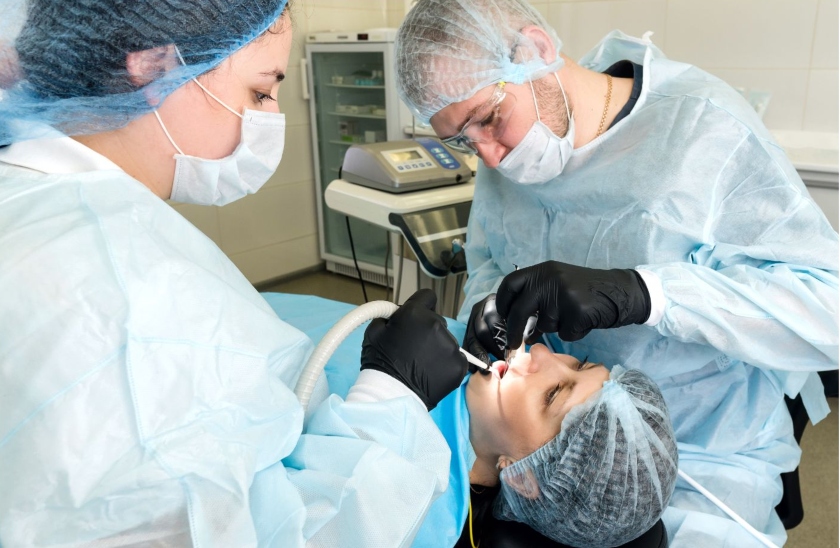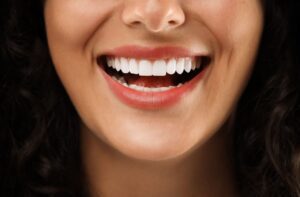Did you know that dental anxiety affects one in five of the US population? This ranges from those who feel a little uneasy at the thought of visiting the dentist, to those who have a debilitating fear of dental care. For some, even the simplest of procedures can be a real challenge. Thankfully, sedation dentistry offers a comforting solution that helps ease those nerves and enables patients to get the treatment they need.
At Mint Dental, here in Alaska, we believe that every patient deserves a stress-free dental experience, and that’s why we’re here to walk you through the world of sedation dentistry. In this post, we’ll discuss the three main types of sedation dentistry and explain what to expect with each type, so you can walk into your next appointment feeling calm and prepared. So let’s get started…
Sedation dentistry and local anesthetic – Isn’t that the same thing?
#1 - Oral Sedation
Oral sedation, also known as “the relaxation pill,” is a popular option for patients who need mild to moderate sedation during dental treatments. It’s typically taken around one hour before a procedure and most dentists use Triazolam, a member of the diazepam (Valium) family known for its calming effects. However, others like Midazolam are also used.
What to Expect:
When patients opt for oral sedation, they’ll be given a pill to take before an appointment as it takes around an hour to kick in. After that time you should feel drowsy but relaxed. Patients remain awake but are able to respond to their dentist’s instructions during the procedure.
Typically, the sedative’s effects last for several hours, so you’ll need someone to drive you home. In most cases, patients don’t remember much about the procedure, which can be a blessing for those with high anxiety.
Ideal For:
Those with moderate dental anxiety or indeed those with a dislike of needles, or a phobia of dental clinics. Effectively, oral sedation dentistry is a straightforward, non-invasive option that works well for most patients.
Unlike a local anesthetic that prevents discomfort during treatment, sedation dentistry uses medication to temporarily slow down brain activity helping patients feel more relaxed during treatment. As such, it’s a great option for people with a low pain threshold, sensitive teeth, or a strong aversion to dental procedures.
Also, unlike a local or a general anesthetic, the sedative of choice can be controlled or tailored to meet your specific needs, ensuring a customized and comfortable experience. Controlling a patient’s level of sedation requires specialist training, in other words, it requires the skills of a certified professional.
Generally speaking, there are three types of sedation used in dental practices:
- Oral sedation
- Nitrous oxide, and
- Conscious IV sedation.
Each provides varying levels of relaxation, so whether you need mild, moderate, or deep sedation, you’ll be covered.
Now we’ve established what sedation dentistry is, and more importantly, what it isn’t, let’s get into the specifics of each type. Starting with:
2. Nitrous Oxide:
Nitrous oxide, commonly referred to as “happy or laughing gas” has been used in dentistry for over 150 years. As a result, it’s a tried-and-tested method of relaxing patients. Because N2O -the chemical name for nitrous oxide works instantly, it’s ideal for patients looking for quick relaxation but wanting to remain alert enough to be able to drive home afterwards.
What to Expect:
Before the procedure begins, a small mask is placed over the nose, through which you’ll inhale a mixture of nitrous oxide and oxygen. It’s a harmless mixture but almost instantly, you’ll start feeling calm and maybe even a little euphoric.
Many patients describe a feeling of light-headedness, warmth, or tingling in their arms and legs. While the nickname “laughing gas” implies uncontrollable giggling, you’ll more likely just feel pleasantly relaxed.
Perhaps the best thing about nitrous oxide is how fast it works—and how quickly it wears off. Unlike a pill that takes 1-2 hours to work and wear off, normality returns as soon as the mask is removed and you start to breathe in normal air.
Ideal For:
Those who experience mild dental anxiety or are simply nervous about a particular procedure like a filling or tooth extraction. Because it’s fast-acting and wears off quickly, it doesn’t impact your day, so it’s also great for those with busy schedules.
One side effect of N2O is that it can make you feel queasy afterwards. Studies show, however, that this only affects around 5% of all patients. Laughing gas also shouldn’t be administered to those who have existing heart conditions.
While those examples listed above are good for mild to moderate anxiety, what about those who face significant dental anxiety?
Don’t worry, we have you covered too!
3. Conscious IV Sedation: Deep Relaxation, Minimal Memory
For patients with significant dental anxiety or those undergoing longer, more complex procedures, conscious IV sedation offers a deeper level of relaxation than oral sedation or nitrous oxide and is ideal for those requiring more complex procedures.
What to Expect:
With conscious IV sedation, the sedative is administered through an IV directly into your bloodstream. This allows for a stronger, faster-acting sedative effect while keeping you awake enough to follow simple instructions from your dentist. This is where the skill of a sedation dentist comes in.
In most cases, you’ll be so deeply relaxed that it can feel as though you’ve slept through the procedure, Moreover, you’re unlikely to remember much of it anyway!
Before administering the IV, your dentist will carefully monitor your vital signs to ensure everything runs smoothly. Because the sedative works quickly, effects are typically felt within minutes of receiving the drug.
Just like oral sedation, patients can expect to feel a little groggy after the procedure so it’s important to arrange for someone to drive you home. You’ll also need to rest for the remainder of the day until the effects of the sedative wear off. This can take 3-4 hours or more.
Perfect For:
Patients with severe dental phobia or those who need lengthy procedures, such as multiple extractions or implant placements. If the idea of being deeply relaxed during treatment appeals to you, this may be the perfect choice.
So, Is sedation dentistry right for you?
There’s no getting away from the fact that sedation dentistry has made it possible for millions of patients to receive the dental care they need without the stress and anxiety they once felt. Whether you’re mildly nervous about visiting the dentist or need deeper sedation for more complex procedures, there’s a sedation option that’s right for you.
To find out more or you’re a nervous or anxious patient who needs treatment, come and have a chat with the team at Mint Dental. We pride ourselves on being non-judgemental and are instead here to listen to your concerns, answer your questions, and guide you toward the best solution for your needs.
Ready to experience stress-free dentistry?
Contact Mint Dental Alaska today and take the first step towards comfortable, anxiety-free dental care.







